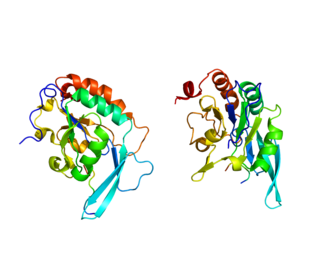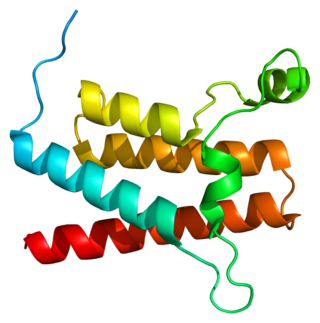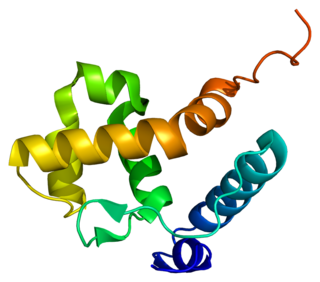
In molecular biology, SWI/SNF, is a subfamily of ATP-dependent chromatin remodeling complexes, which is found in eukaryotes. In other words, it is a group of proteins that associate to remodel the way DNA is packaged. This complex is composed of several proteins – products of the SWI and SNF genes, as well as other polypeptides. It possesses a DNA-stimulated ATPase activity that can destabilize histone-DNA interactions in reconstituted nucleosomes in an ATP-dependent manner, though the exact nature of this structural change is unknown. The SWI/SNF subfamily provides crucial nucleosome rearrangement, which is seen as ejection and/or sliding. The movement of nucleosomes provides easier access to the chromatin, allowing genes to be activated or repressed.
Chromatin remodeling is the dynamic modification of chromatin architecture to allow access of condensed genomic DNA to the regulatory transcription machinery proteins, and thereby control gene expression. Such remodeling is principally carried out by 1) covalent histone modifications by specific enzymes, e.g., histone acetyltransferases (HATs), deacetylases, methyltransferases, and kinases, and 2) ATP-dependent chromatin remodeling complexes which either move, eject or restructure nucleosomes. Besides actively regulating gene expression, dynamic remodeling of chromatin imparts an epigenetic regulatory role in several key biological processes, egg cells DNA replication and repair; apoptosis; chromosome segregation as well as development and pluripotency. Aberrations in chromatin remodeling proteins are found to be associated with human diseases, including cancer. Targeting chromatin remodeling pathways is currently evolving as a major therapeutic strategy in the treatment of several cancers.

DNA-directed RNA polymerase II subunit RPB1, also known as RPB1, is an enzyme that is encoded by the POLR2A gene in humans.

Transcription activator BRG1 also known as ATP-dependent chromatin remodeler SMARCA4 is a protein that in humans is encoded by the SMARCA4 gene.

SWI/SNF-related matrix-associated actin-dependent regulator of chromatin subfamily B member 1 is a protein that in humans is encoded by the SMARCB1 gene.

Probable global transcription activator SNF2L2 is a protein that in humans is encoded by the SMARCA2 gene.

SWI/SNF-related matrix-associated actin-dependent regulator of chromatin subfamily A member 5 is a protein that in humans is encoded by the SMARCA5 gene.

Actin-like protein 6A is a protein that in humans is encoded by the ACTL6A gene.

AT-rich interactive domain-containing protein 1A is a protein that in humans is encoded by the ARID1A gene.

SWI/SNF complex subunit SMARCC1 is a protein that in humans is encoded by the SMARCC1 gene.

SWI/SNF complex subunit SMARCC2 is a protein that in humans is encoded by the SMARCC2 gene.

Protein SSXT is a protein that in humans is encoded by the SS18 gene.

AT-rich interactive domain-containing protein 1B is a protein that in humans is encoded by the ARID1B gene. ARID1B is a component of the human SWI/SNF chromatin remodeling complex.

SWI/SNF-related matrix-associated actin-dependent regulator of chromatin subfamily D member 1 is a protein that in humans is encoded by the SMARCD1 gene.

Protein polybromo-1 (PB1) also known as BRG1-associated factor 180 (BAF180) is a protein that in humans is encoded by the PBRM1 gene.

AT-rich interactive domain-containing protein 2 (ARID2) is a protein that in humans is encoded by the ARID2 gene.

SWI/SNF-related matrix-associated actin-dependent regulator of chromatin subfamily D member 3 is a protein that in humans is encoded by the SMARCD3 gene.

Probable global transcription activator SNF2L1 is a protein that in humans is encoded by the SMARCA1 gene.

Actin-like protein 6B is a protein that in humans is encoded by the ACTL6B gene.

SWI/SNF-related matrix-associated actin-dependent regulator of chromatin subfamily D member 2 is a protein that in humans is encoded by the SMARCD2 gene.


















